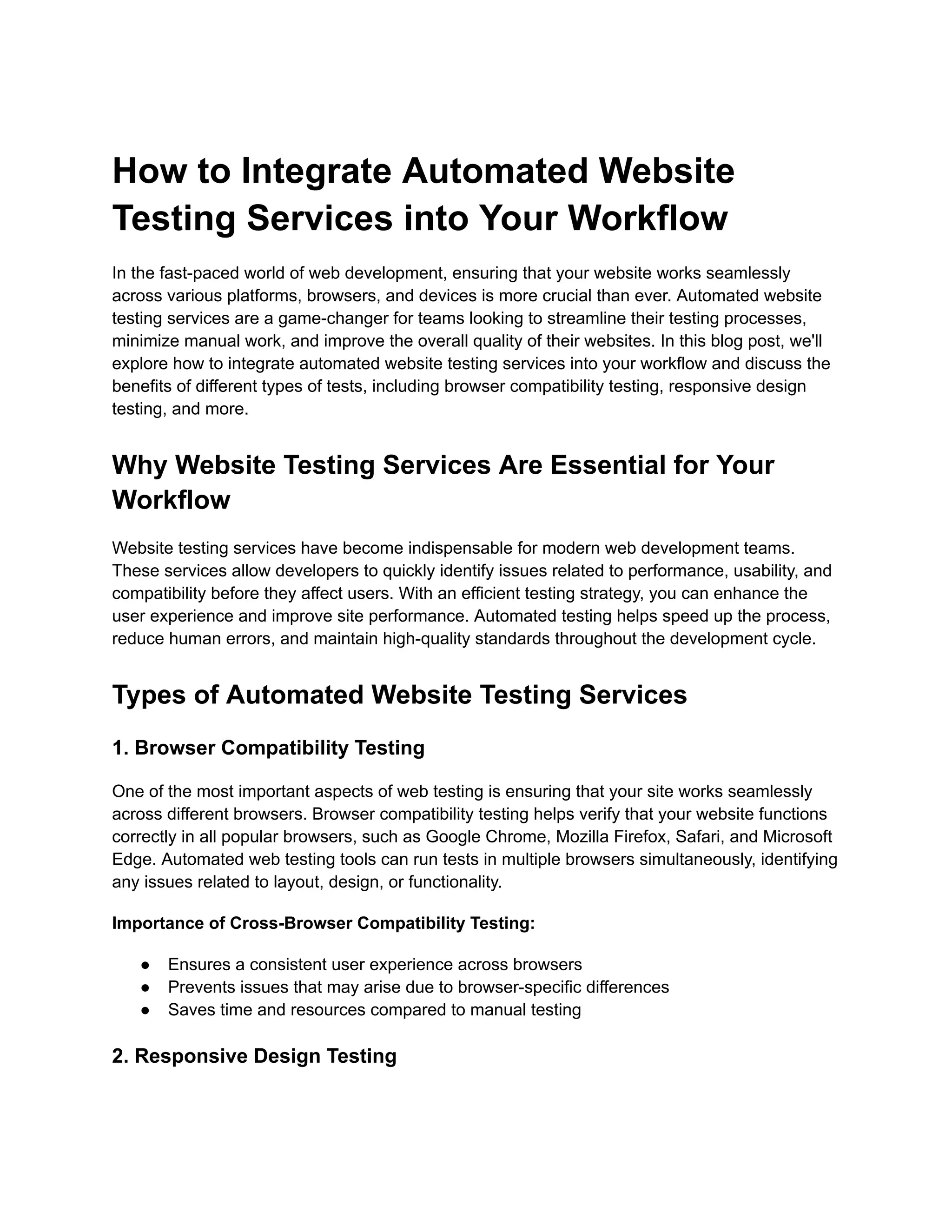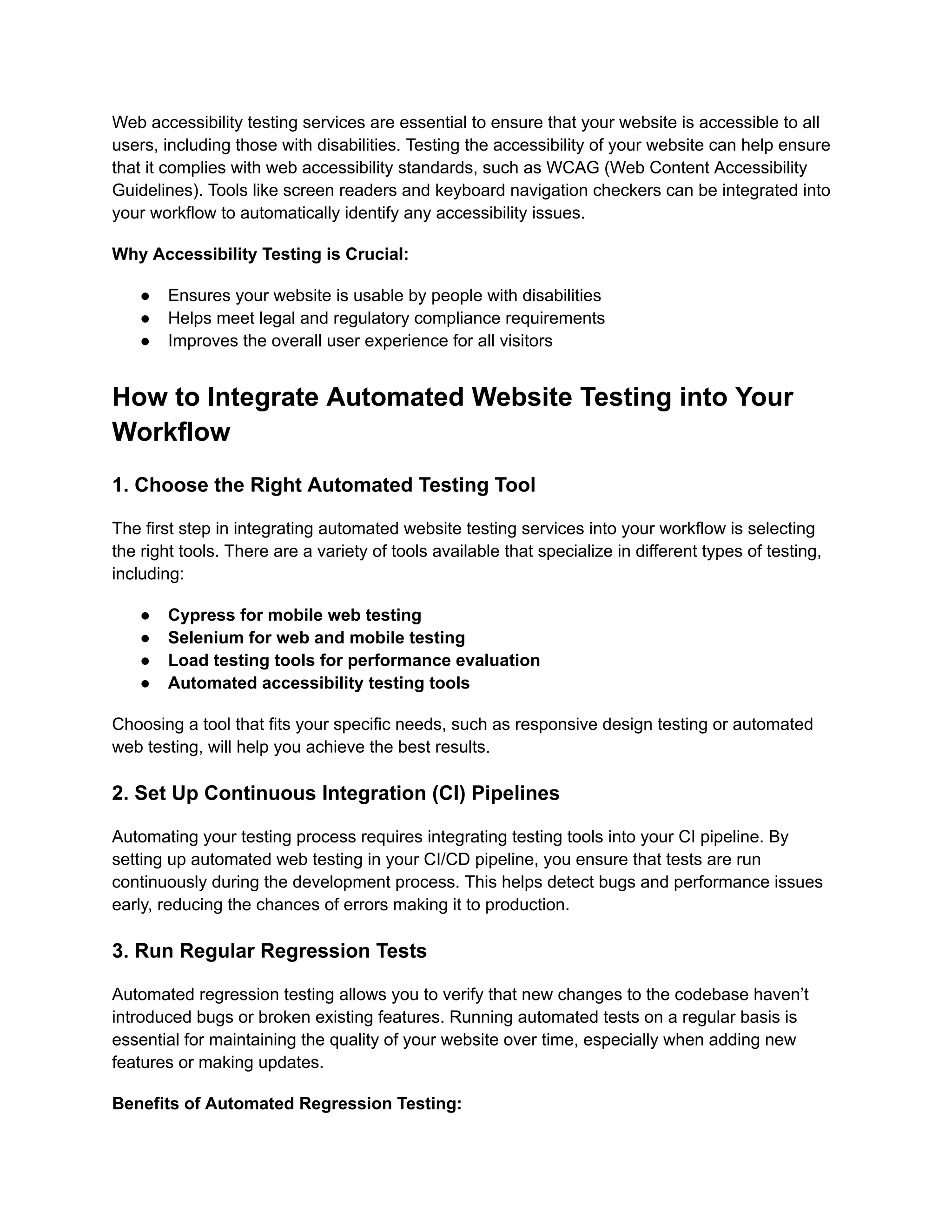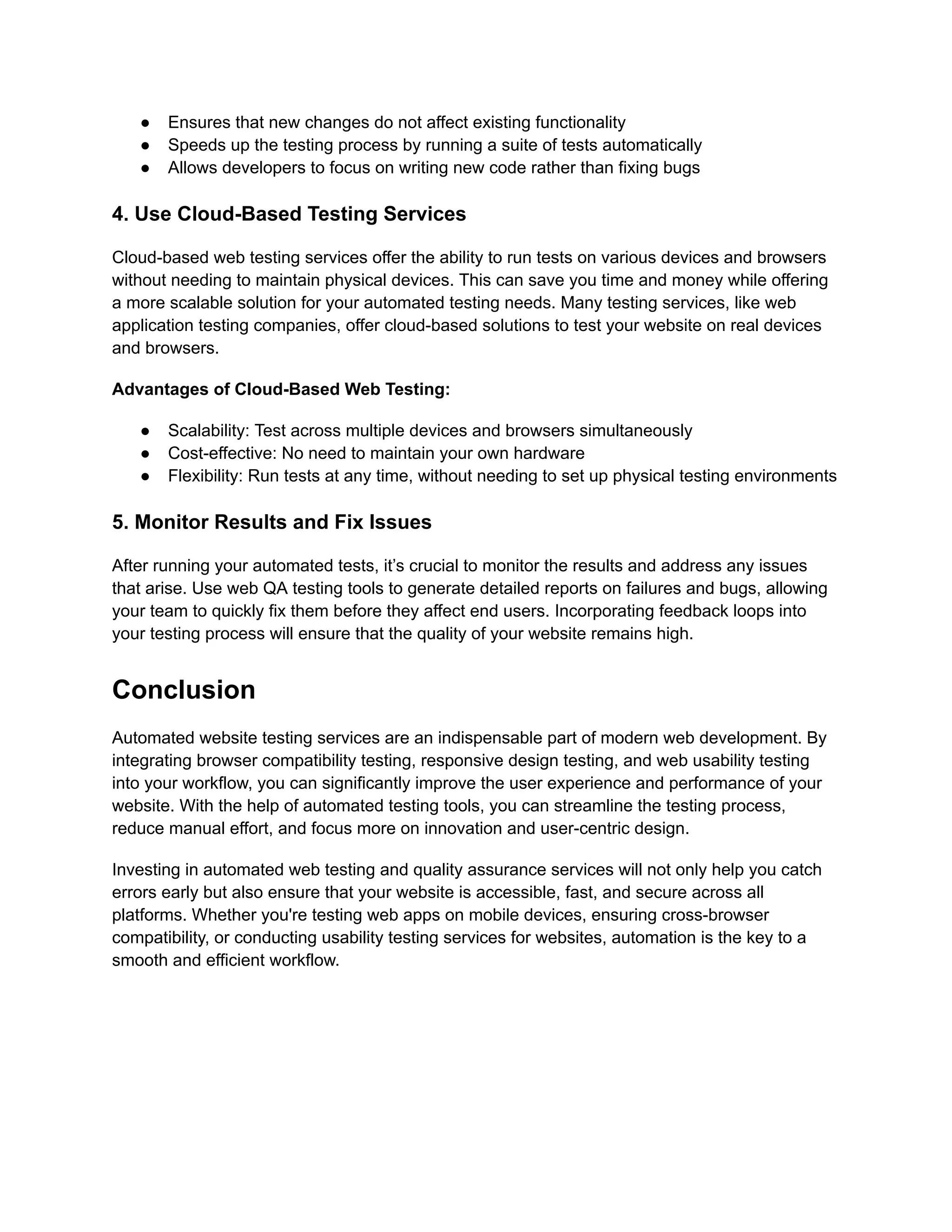In the fast-paced world of web development, ensuring that your website works seamlessly across various platforms, browsers, and devices is more crucial than ever. Automated website testing services are a game-changer for teams looking to streamline their testing processes, minimize manual work, and improve the overall quality of their websites. In this blog post, we'll explore how to integrate automated website testing services into your workflow and discuss the benefits of different types of tests, including browser compatibility testing, responsive design testing, and more.Automated website testing services are an indispensable part of modern web development. By integrating browser compatibility testing, responsive design testing, and web usability testing into your workflow, you can significantly improve the user experience and performance of your website. With the help of automated testing tools, you can streamline the testing process, reduce manual effort, and focus more on innovation and user-centric design. Investing in automated web testing and quality assurance services will not only help you catch errors early but also ensure that your website is accessible, fast, and secure across all platforms. Whether you're testing web apps on mobile devices, ensuring cross-browser compatibility, or conducting usability testing services for websites, automation is the key to a smooth and efficient workflow.https://testers-hub.com/website-testing-services/



